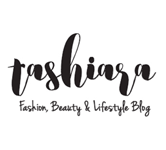How to shampoo successfully - Part – Three

The word shampoo was derived from the Hindi word Champo (meaning to press, knead and sooth) during the colonial era in 1762. A variety of herbs and their extracts were used as shampoo in the ancient times and the most effective shampoo was made by boiling Sapindus (a.k.a Soapberries) with Indian Gooseberry (Amla) along with additional herbs that added fragrance, was then extracted and used to wash and condition the hair. Shikakai, Hibiscus flowers and Ritha was also used in shampoos. Guru Nanak the founding prophet of Sikhism would often make references to the soap berry tree and soap and their qualities in the 16th century. The practice of “Champo” was very popular with the colonial traders in India, and when they returned to Europe, they introduced this remarkable treatment to all and christened it Shampoo.
During the early development stages of shampoo, English hair stylists would boil shaved soap in water and add herbs to give shine and fragrance. It was only in 1927, that the first liquid shampoo was invented by the German inventor Hans Schwarzkopf in Berlin. Whose name created the first brand for shampoo and till this day remains a much loved and trusted brand.
With huge array of brands, we are familiar with, some by our own experience and some by hearsay. What do we first do while choosing the right shampoo, our most common understanding is that we assume that we are of our hair types which are either dry, oily or normal. We go by the obvious choices regarding these most common traits and pick the brands we are most familiar with and have grown an affinity to for somewhat very sketchy reasons. So, how do you know that the brand you have grown accustomed to is really meant for you? Or perhaps in using them, you yourself come to the conclusion that perhaps this is just the best your hair will ever be because you don’t seem to know where you’re going wrong in your hair care. Also, extremely essential for you to know is that being a man your regime will dramatically differ from than of a woman, so does your hair care products you choose and your shampooing technique.
Here are the few cardinal rules we all should follow in pampering your precious locks.
1. Avoid shampoos that have sodium chloride and polyethylene glycol, these chemicals compounds are used as thickeners but cause the hair to becomes very dry and brittle.
2. Always choose Paraben free shampoo. Paraben is used widely as a preservative in cosmetics and pharmaceutical products. Paraben controversially known to be an Endocrine Disruptor (chemicals that interfere with the hormonal system in certain doses. These disruptions are said to cause cancerous tumours, birth defects, and other developmental issues) Grapeseed Extract is now promoted as a natural preservative and opting for more natural ingredient product is definitely the safer way to go.
3. Avoid shampoos with ammonium lauryl sulfate, sodium laureth sulfate, and sodium lauryl sulfate as they are harsh detergents and will rob your hair of its natural moisture.
Shampoos by hair type
Coarse Hair:
Always chose a shampoo that will build up the moisture in your hair. Shampoos that have, glycerine, panthenol (an alcohol analog of Vitamin B5, its used as a moisturiser and know to be a wound healer) and Shea butter are excellent to rejuvenate coarse hair.
Fine or Thin Hair:
Shampoos that add volume would suit you best, to identify them, look for the shampoos that are “clear” if you can’t see through the shampoo bottle then avoid them. The reason for this is clear shampoos have minimal conditioning agents, which won’t let your hair over soften and slump down, but instead give body and just the right amount of conditioning you need.
Wavy or Curly Hair:
Look for shampoo’s that include silicone, this give your cute curls just the amount of moisture they need to stay bouncy and manageable, and prevent them from absorbing too much moisture and getting over frizzy.
Normal or Well-Balanced Hair:
Well you’re the lucky one in the group, as you can chose any type of shampoo you like, making sure they are herbal sans the harmful chemicals that robs your hair from it’s natural nutrients. Tea shampoo is known to work wonders with this hair type.
Very Thick Hair:
For this hair type you’d want to choose a shampoo that will give you volume on the roots and not the ends and just the right amount of moisture your hair needs. Avocado or Macadamia nut out infused shampoos will work best for you.
Dry or Damaged Hair:
Opting for shampoos with Keratin (is the protein that protects the epithelial cells from damages or stress) acts like a super moisturiser and will help repair your damaged hair. Avoid shampoos that have certain alcohols like, cetearyl, cetyl, and stearyl alcohol in them for they further would dry out your hair.
Coloured Hair:
Maintaining your coloured might seem tricky, just opt for shampoos that have Vitamin E and A that works remarkable well and always chose shampoos that are meant specifically for coloured hair for there is a reason why they exist so don’t experiment and risk of losing the vibrancy of your hair.
Oily Hair:
Your body compensates of a dry scalp by overproducing oil, Shampoos with Tea Tree Oil helps treat your dry scalp and controls the oil production giving the right amount of conditioning as well.
Lather, rinse, repeat… are we sure?
Now here comes the most tedious most mundane routine we soon get tired of and many of us, including me, would just rush in the shower for a quick haphazard shampoo and run out. Then wonder why my hair gets so dirty by the evening again? Here is the crackdown on the easiest most effective way to shampoo that many of us have no clue about. It’s simple, just pick a routine that works best for your type and go with it.
How to apply shampoo
Step 1: Ensure your hair is properly soaked, before starting. If you have oily hair preferably use lukewarm to hot water as it helps to open the cuticles and loosen the oil in your hair, then reduce the temperature of the water once shampooing. Step 2: Water rinse out the dirt in your hair properly before applying shampoo, this would enable your hair to grasp the nutrients in your shampoo quicker.
Step 3: Ladies, if you have medium to long hair, the diameter of an Oreo cookie amount of shampoo is sufficient, and Gentlemen for you, the size of half an Oreo cookie would do just fine. Repeat if you have previously oiled your hair, but reduce the amount upon your second application.
Step 4: Always apply the shampoo on the roots and never at the ends. Gently massage the end for a few seconds
Step 5: Lather using on your fingers never your palms. Gently in circular motions is the way to go
Step 6: Try to rinse out your hair with cold water as this seals the cuticles and keeps in the moisture. Although I’m not trying to give a brain freeze in winters, use tepid to warm water instead but certainly not hot.
Step 7: The Cardinal Rule of Conditioning, Tips never the roots. Always work it deep into your roots starting mid-way from the length of your hair, and let it soak in for a few mins before washing.
Finally!!! Always, always towel dry your hair gently never with a rough touch, as this would cause breakages within the strands. After you towel dry, this would be appropriate moment to use a hair serum if you do, and just let it naturally dry out, this plumps up the protein in the hair making is soft and shiny and just luscious. If you absolutely must use a blow dryer if you are in a hurry, or have a severe case of sinusitis as me, then always apply a serum to protect your hair and then start with the cold setting on your blow dryer, then only use the hot setting for the roots of your hair, once dry let the somewhat damp tips dry out naturally, this will keep the moisture still locked in your hair.
Note: Never over shampoo your hair. Your routine should consist of oiling twice a week and shampooing twice a week is sufficient. If you have oily hair and find it unmanageable then 2-3 times a week works fine.
This guide will have 4 parts to it and we will be linking each part here.
Part 1 “Myths Vs. Facts”








